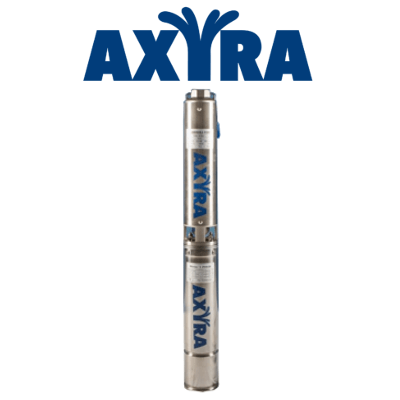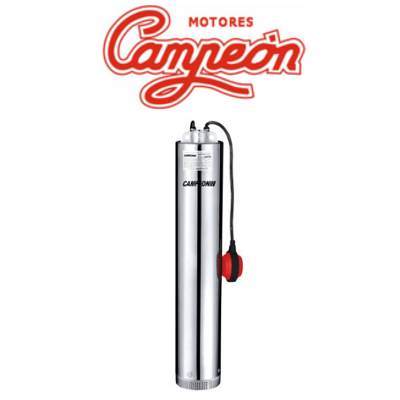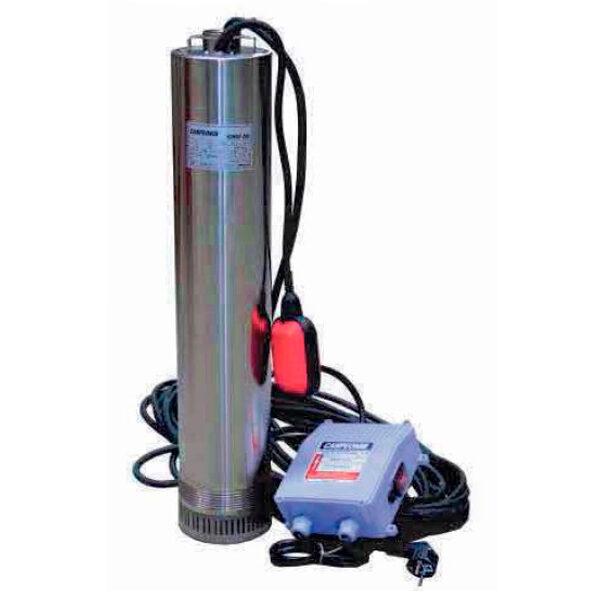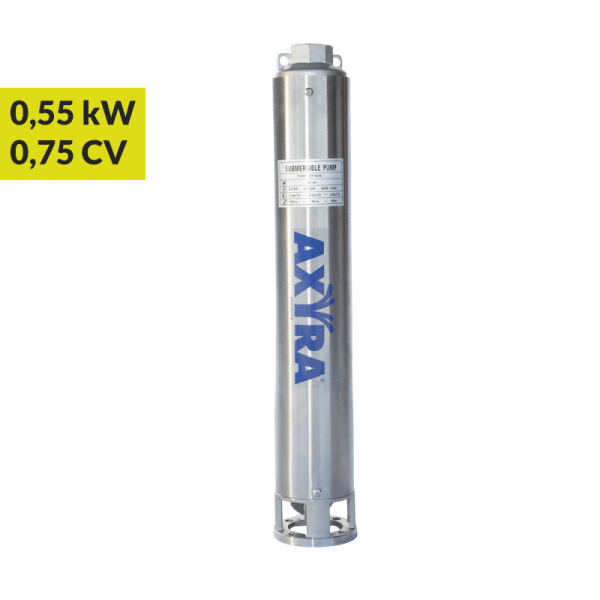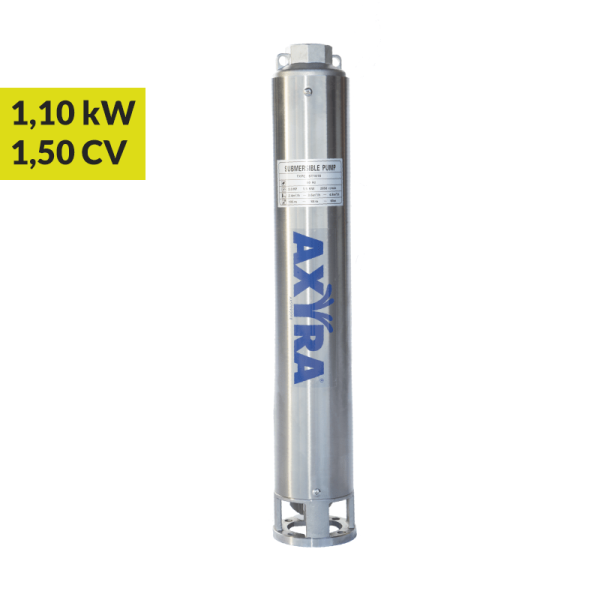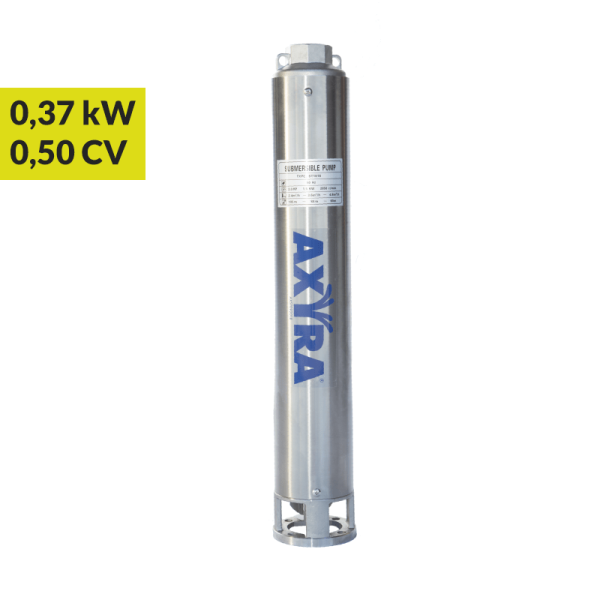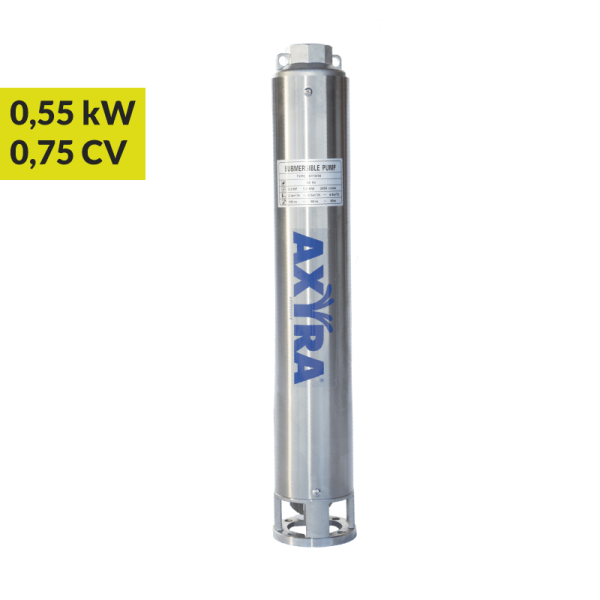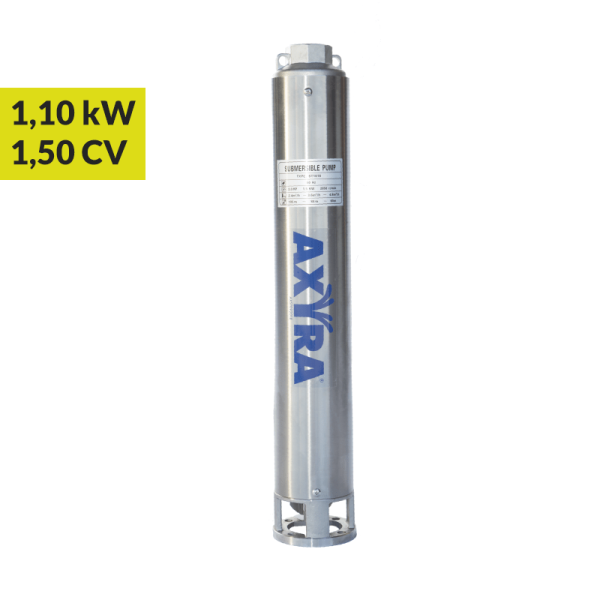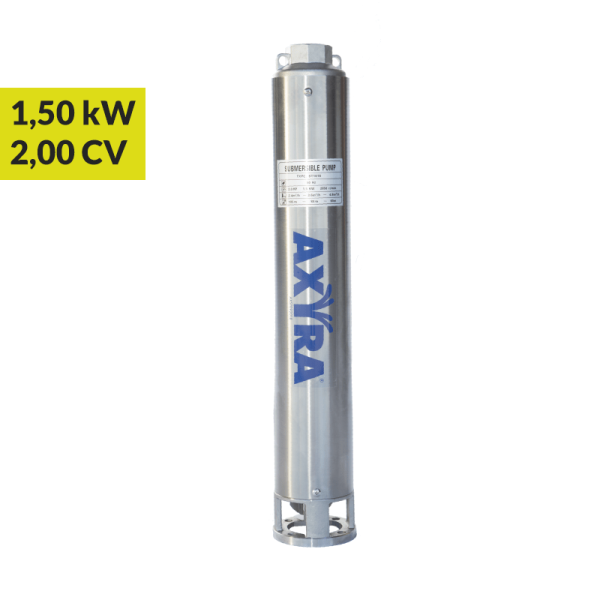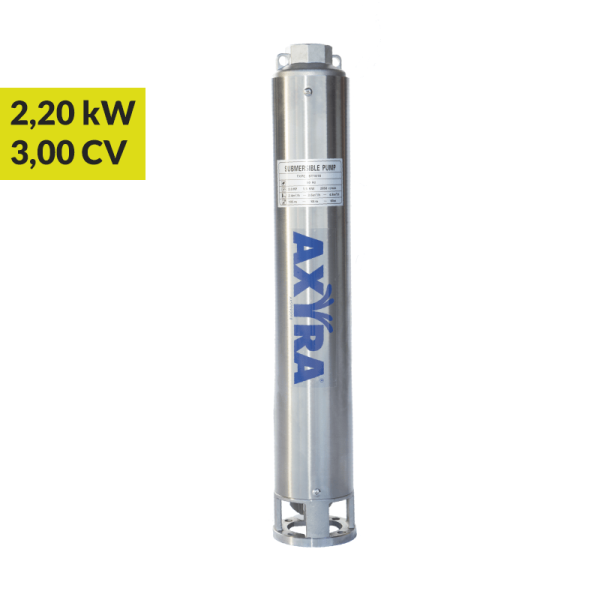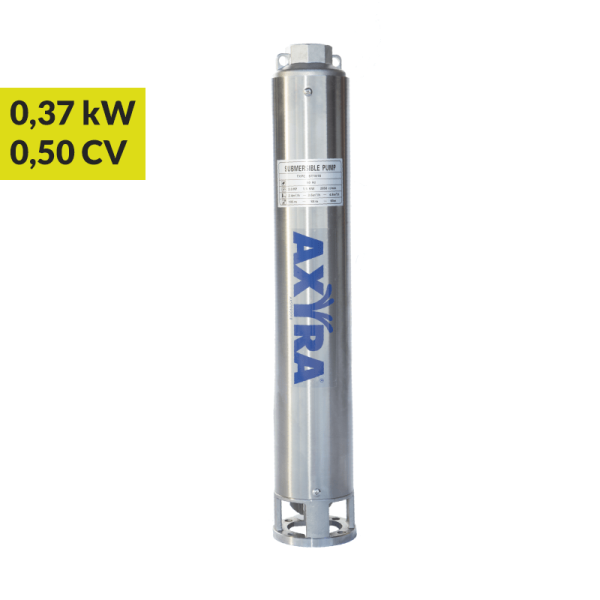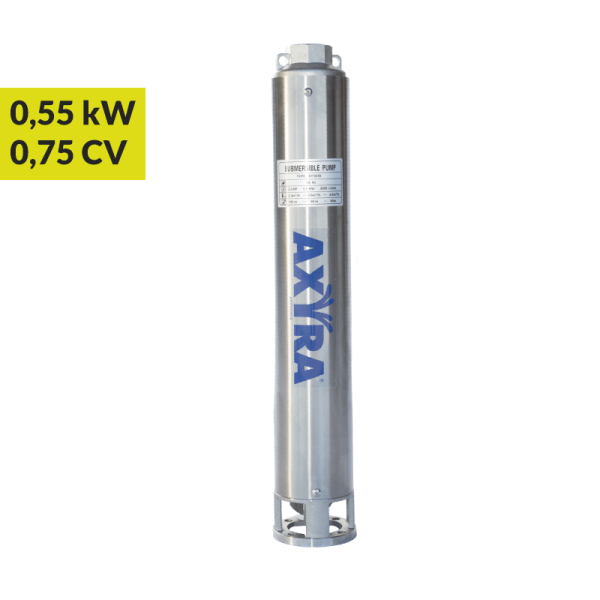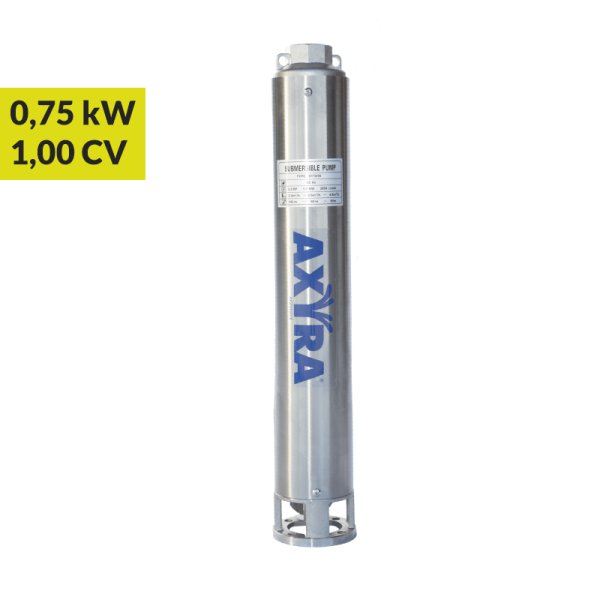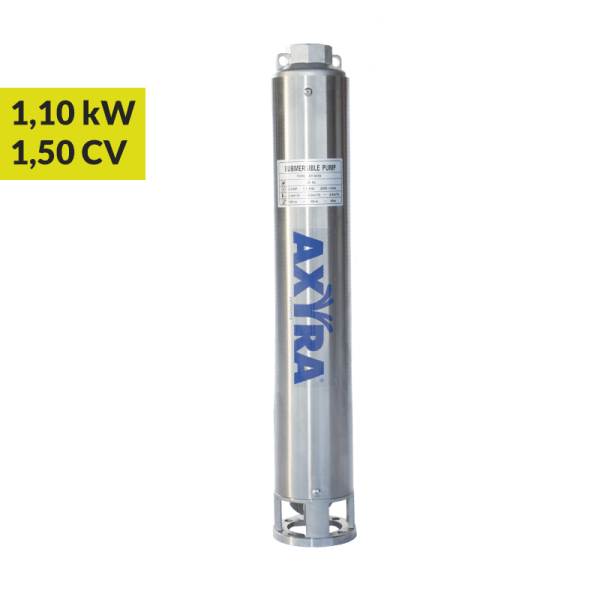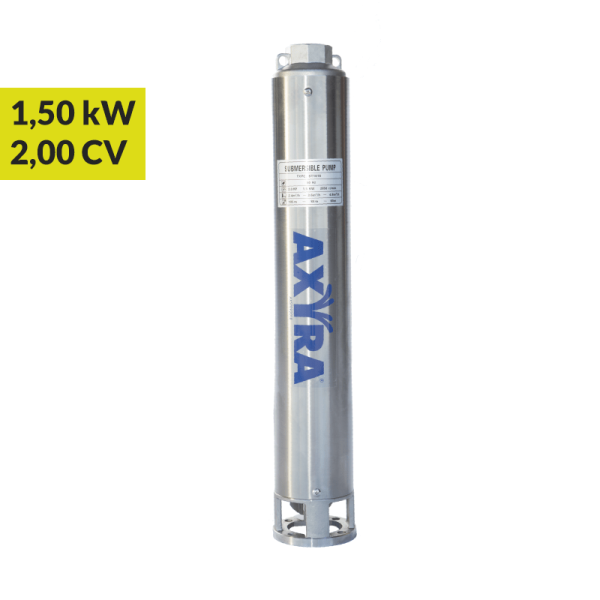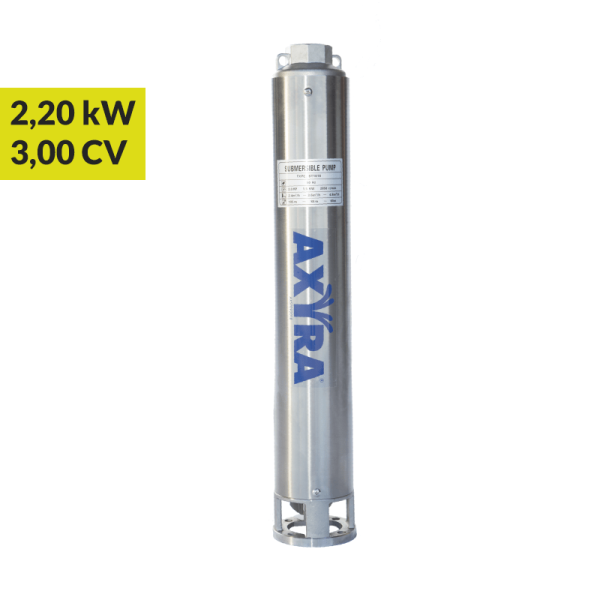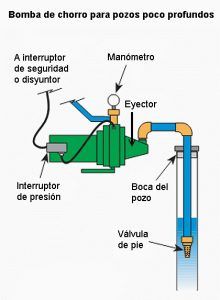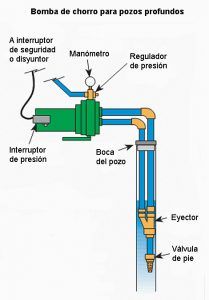Motorbombas
All the well pumps They are pumps designed to draw water from the subsoil. They are submersible and adapt to the needs of the wells. Mostly constructed of stainless steel or cast iron, being the last of these more resistant. They are the best choice for a deep well system. As the name implies, this type of pumps is immersed in the same well, they have the appearance of a long tube made of steel, which seals in its own compartment, connected to the power supply, they supply a closed electric motor, for medium of cables that go on the surface feeding the pump.
How do well pumps work?
Submersible well pumps operate through a closed electric motor that spins a row of impellers. Each impeller pushes the water through a diffuser that is above it.
The capacity of the pump is determined by the width of the impeller blades and the number of impellers that determine the pressure.
Submersible pumps have obvious advantages, such as efficiency and high capacity. They hardly require maintenance and may be running for many years (around 20 years mid-range) underwater without any problems. This is the most optimal option for wells that are around 25 meters deep or more, this type of pump is very economical.
The impeller and diffuser tolerance is relatively small and basic, so the pump has difficult suction in water with abrasives such as sand or gravel. They are also lubricated by water to cool and cool, if it works in a dry well can give bad results. There are pumps with liquid level controls to limit the time of these pumps in wells where they remain dry.

What pump for well to choose? Types of well pumps? Submersible water pumps for wells or injection?
When choosing our well pump, we will take into account certain aspects. There are two types of water pumps for wells, jet pumps and submersible pumps, which will mostly depend on the depth of the well and the diameter of the pipe within the jacketed well.
Next, we must know that most well pumps are centrifugal electro-pumps, there are two types:
- Jet pump or injection pumps.
They are located on the surface or a subsoil, and they extract water from the well by suction. It is usually complemented with tanks or storage tanks. They are divided into two types mainly (depending on the ejector):- Jet pumps for shallow wells.
They have a single single tube directed to the well and the ejector located in the body of the pump. - Deep well jet pumps.
They have two pipes directed to the well and one ejector below the water level.
- Jet pumps for shallow wells.
- Submersible pump
Its most considerable difference, compared to the pumps of the jet well is the operation. A Submersible well pump does not suck water, but pushes it upwards, this action requires much less energy, it is more efficient when used in deep wells, in general. They have a single tube from the well that can or can not be connected to a storage tank. These pumps are installed at the bottom of the water, are designed to be permanently submerged.- Submersible pumps for deep wells
- Submersible pumps for deep wells
Mainly, the option to choose between, a jet pump and a submersible pump, it will depend on the depth of the well where we are going to use it mainly and the diameter of the pipe inside the jacketed well. Next, we will solve it certain guidelines that are essential when choosing a well pump.
Among these options, we should assess what could be the solution that best suits our needs, good quality and perhaps, with a long-term thinking of functionality. You also have to take into account the specifications that usually come with well pumps: Turbine characteristics Turbine (Flow rate, maximum working pressure, output, maximum amount of sand, working temperature of the liquid, maximum working depth, direction of rotation, adapter flange to the motor, external diameter, liquid to be pumped, tests of agreement), Features of the well pump itself, performance, characteristics and engine options.
How deep is the water where we will use the well pump?
The first consideration we have to take into account, is the distance of the water that must travel to reach the surface, If the area where our house is has a stable supply of water near the surface, access will be much easier, on the other Part, if the water is going to come from a deep well, will require additional considerations, along with more complex well pumps.
- Depth less than 8 meters: choose a jet pump for shallow wells.
- Depth of between 8 meters and 35 meters: choose a jet pump for deep wells.
- Depth between 35 meters and 120 meters: choose a submersible pump of 4 inches.
What size of pump is necessary?
It will be influenced by our domestic water requirements. We must assess the discharge capacity of a pump, that is, the speed at which the water flows from the source to the point of discharge, which is measured in liters per minute. An average household requires between 30 and 50 Liters / Minute. When determining our water needs, it is advisable to add a higher percentage of safety, to have in case you can or need to consume a peak of water, or if in the future we intend to include some household appliance that uses the water supply. For example, if we have calculated that we will need 30 Liters per minute, the ideal would be to choose a pump with more power, 4 or 5 Liters per minute above the calculation more or less. To calculate the discharge capacity safely, it would be convenient to add between 3 and 4 Liters per minute per appliance, that is, shower, refrigerator, washing machine, dishwasher, faucets, etc.
But we must ensure that the pump does not exceed too much power that we will need, since it would generate energy inefficiency and lower performance.
Lifetime and maintenance of well pumps
Una jet pump of one or two tubes usually last one 20 average years in perfect condition, before it has to be replaced.
Una submersible pump it will last an average of 15 years in a fully functioning, factor that will guarantee its useful life in full operation will be its use in clean waters mostly (low sediment, sand, gravel, etc.), then, over the years, together with the relationship of a possible use with presence of sediment can shorten this period of useful life, and / or reduce its total operation. Then, it must be replaced.
There are a series of maintenance and factors to take into account if we want to extend a longer useful life and in better conditions.
- Work cycle: A pump with an intermittent work cycle will have a longer and longer life than a pump of constant, frequent and continuous use.
- Type, Size and Engine Qualities: a higher power electric motor will last longer than an electric motor of fractional power, since it will not work at maximum speed and will require a shorter time to operate. The type and quality of the motor are of high importance, since the bearings of the electric motors, together with the lubrication requirements, are related to the quality and affect the useful life of a pump.
- Sediment of the water: The sediment of the water is abrasive and can cause a greater wear on the bearings of the pump. Both sand, gravel, algae and other contaminants typical of water can shorten and significantly affect the life of the pump. The more power the pump will have, the less it will be affected by this kind of inconvenience, but it will also be affected.
- A correct installation oriented to the future: It is important to place it in an appropriate location to be able to take full advantage of it, as well as the integrity of the check valves, filters, and wiring must have a correct and safe installation.
- Safe performance of the well: it is essential that the capacity of the pump is equated / equaled with the output speed. Otherwise, it can drastically reduce the life of the pump to its expected power.
- Shutters: Install a shutter ("nozzle that allows opening, closing or regulating an inlet, such as camera shutters"), its use will ensure total control over the water cut to protect the pump from damage caused by excess of water, as it allows the flow of water in the well, but stops or delays the supply of additional water.
- Cavitation: when air, gas, or steam enter the chambers or pump impellers, which can favor and cause overheating of moving parts, and with that a corresponding mechanical damage.
How to remove a water pump from a well?
Water pumps for wells usually come with safety-resistant ropes, which you must attach before you throw it away, pull it or raise it with an elevator, and make sure it rises straight without friction or snagging, since this can spoil the Water Pump.
Well Pumping Marks
There is no better or worse brand, if that there are more known, there are with simpler, more complete catalogs, for some more uses professionalsPlus optimal and with the best specs, and some more Affordable, simple, and simple, it would be advisable find out what solution to our need we will have to choose, and from there, assess which option is more optimal. Tall the brands that it distributes Intermaquinas They have complete Quality and Reliability, with varied catalogs, with simpler machines up to the most complete, all with the best qualities oriented for all uses.
¿Water pumps for electric wells?
In its entirety, it is a standard that water pumps for wells are electric, since they will be down, even submerged in water, and can not be recharged with any fuel, rather than with electricity, by means of cables, also because electric are much easier in terms of mechanism, are more affordable, spend much less and there is no problem with using power cables (even with removable connectors safe)
Guarantees and shipments.
All our products have a guarantee according to the current European legislation of two years for individuals and one year for professionals, with an ease of immediate, easy and free claim without commitment. In addition to a free shipping * to the whole peninsula.
With the peace of mind of an online purchase of guaranteed confidence, with an immediate answer about possible doubts where we will inform you and advise on the best practices and totally free advice.



